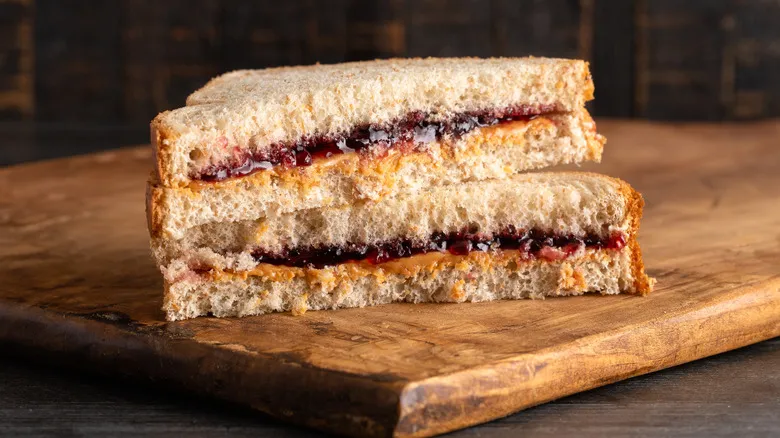The perfection of PB&J
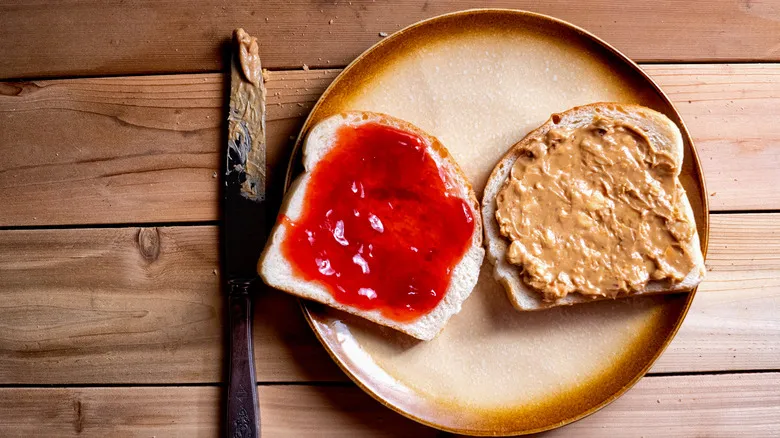
In numerous ways, peanut butter and jelly stands out as the ideal lunch option for kids. To begin with, it's affordable. Children typically have less discerning tastes, so spending a fortune on gourmet lunch meats isn't really necessary. Additionally, it's soft and easy to chew, which is important for little ones who prefer not to struggle while eating. Moreover, it can be enjoyed at room temperature. If you prepare a lunch at 7 a.m. and it sits in a backpack or locker until noon, cold cuts and cheese can become questionable after five hours. Furthermore, it's incredibly simple to make. As a parent, I value time and effort, and this meal requires minimal of both. Lastly, it's quite appealing. The blend of sweet and salty satisfies a child's (or my own) basic cravings.
Considering all these factors, it's clear that peanut butter and jelly is a beloved staple in American diets — so much so that April 2 has been designated as National Peanut Butter and Jelly Day. Some estimates suggest that the average person consumes over a thousand of these sandwiches during their childhood. Honestly, unless you have an allergy, that's a pretty safe assumption. Like many other popular foods — such as hot dogs, burgers, and pizza — we often overlook the fact that there was once a time when these beloved staples didn't exist. Just like any other innovation, someone had the creativity to develop and introduce them.
So, who invented peanut butter and jelly sandwiches?
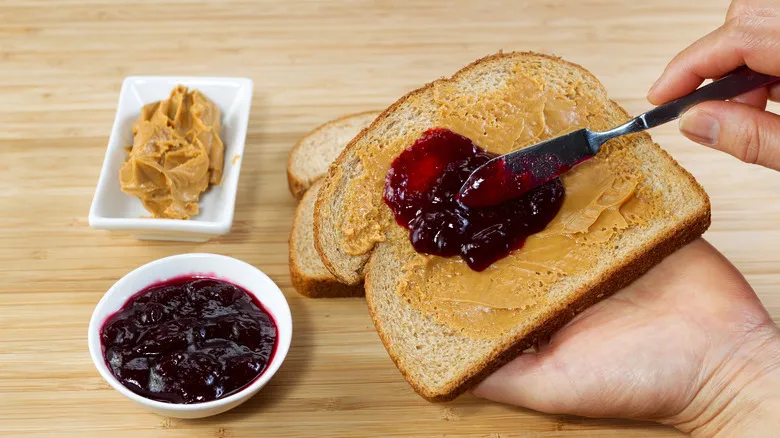
It may seem simple and obvious to us now, but the peanut butter and jelly sandwich is a relatively recent creation. Most sources trace its origins back to the early 1900s. According to Mark McWilliams' book, "The Story Behind the Dish: Classic American Foods," the first recipe for a sandwich featuring peanut butter and jelly was published by a woman named Julia Davis Chandler in 1901.
Before this, there were various recipes for spreading peanut butter on bread. The National Peanut Board (NPB) notes that peanut butter began to gain popularity after its introduction at the 1893 World's Fair in Chicago, Illinois. However, it wasn't until 1901 that the iconic combination of peanut butter and jelly emerged.
At that time, peanut butter was considered a luxury item. According to the NPB, it was a treat enjoyed by the upper class and was often paired with (by today's standards) unusual ingredients like pimento or watercress. However, following the 1904 World's Fair in St. Louis, Missouri, peanut butter became more affordable as grocery stores started to carry it. This set the stage for its widespread popularity.
The ingredients became more widely available
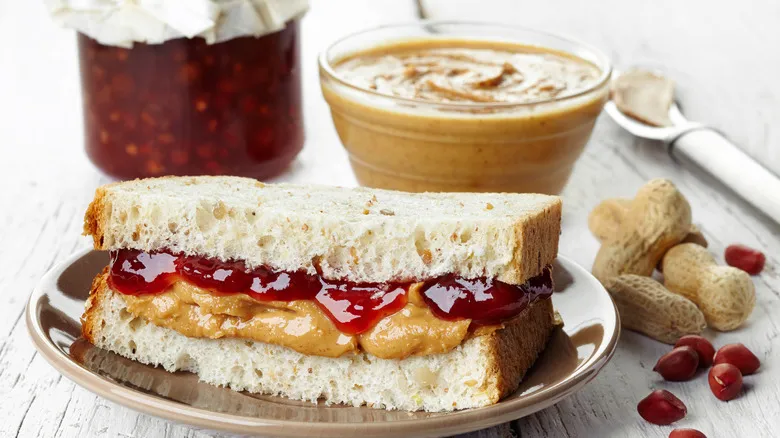
In the early 1900s, Otto Rohwedder introduced pre-sliced bread, revolutionizing the way sandwiches were made. A few years later, in 1917, Paul Welch (yes, the one from Welch's) patented his method for producing grape jelly, which became a favorite among World War I soldiers. With these ingredients becoming more readily available and affordable, the peanut butter and jelly sandwich transitioned from a luxury item to a staple on Great Depression dinner tables.
However, it wasn't until World War II that the PB&J truly became a cultural icon in America. The reason? Peanut butter and jelly sandwiches were included in soldiers' rations. The ingredients were inexpensive, easy to find, simple to mix, and could be eaten at room temperature—plus, they were convenient to consume with one hand! After the war, returning soldiers continued to enjoy these sandwiches, leading to a surge in their popularity.
Over the years, the type of bread has evolved from white to whole wheat, and dietary changes have introduced alternatives like almond butter. Culinary creativity has even led to variations using bananas or marshmallow fluff instead of jelly. Nevertheless, there remains one combination that stands out as a quintessential part of American culture, alongside baseball, apple pie, and Chevrolet: peanut butter and jelly. So, the next time you indulge in a classic PB&J, remember—it's not just a sandwich; it's a slice of Americana.
Recommended
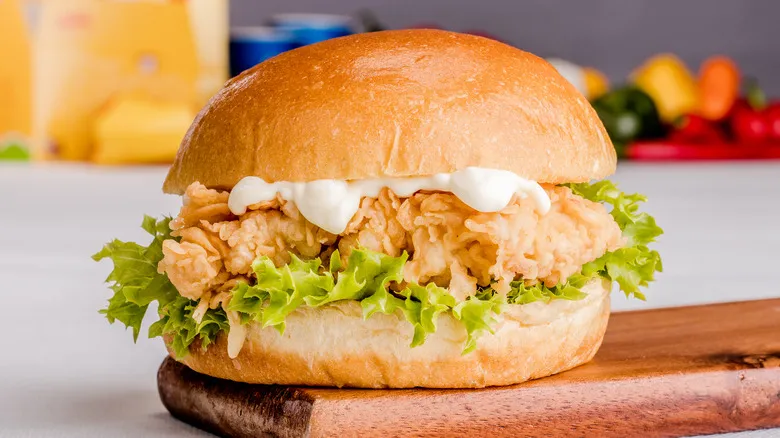
The Methodology For This Chicken Sandwich Ranking Is Flawed, But Hilarious
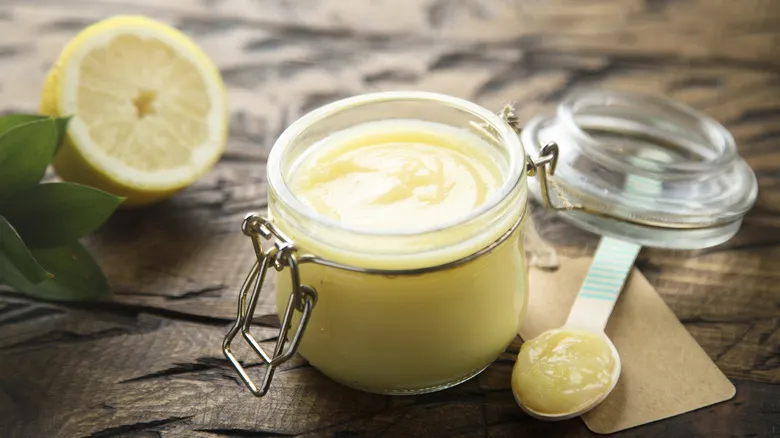
Lemon Curd And Peanut Butter Is An Unforgettable Sandwich Combo
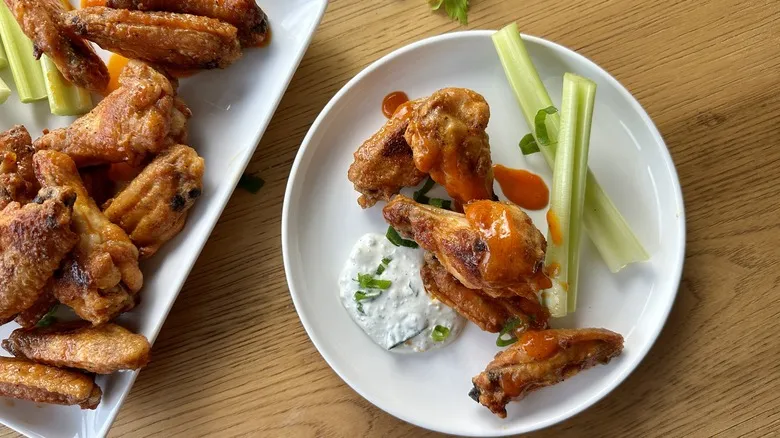
Easy Classic Buffalo Wings Recipe
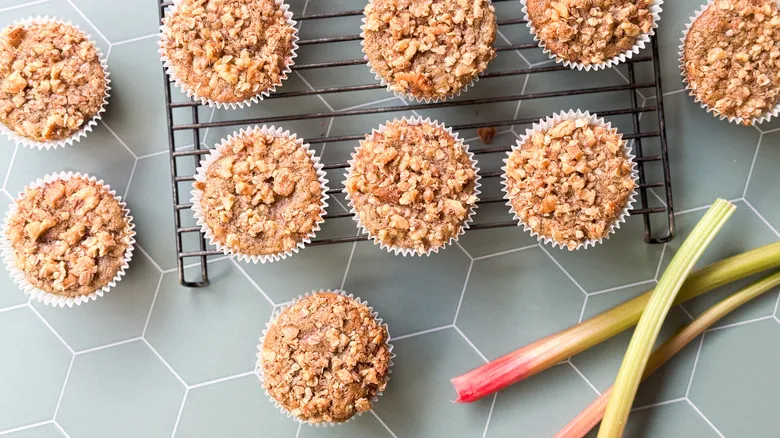
Rhubarb And Cardamom Oat Muffins Recipe
Next up

